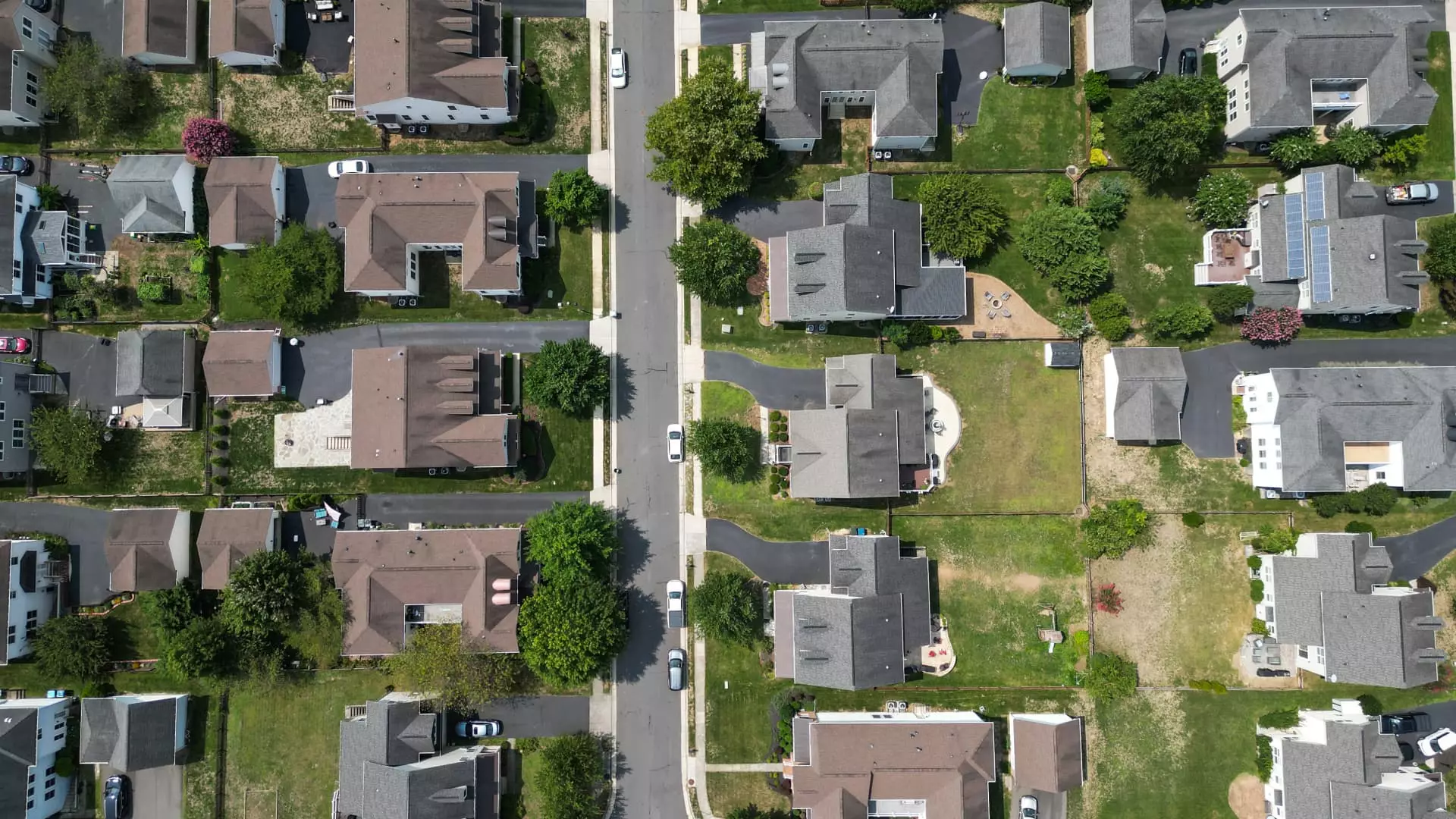Recent declines in mortgage rates have sparked a noticeable increase in refinancing activity among homeowners. For those seeking to lower their monthly payments or tap into their home equity, this window of lower interest rates appears promising. Applications for refinancing surged 7% last week, with demand soaring 40% compared to the same period last year. While on the surface this looks like a positive trend for consumers, a deeper analysis reveals the dangers of overreliance on transient rate dips in a volatile economic environment.
The average interest rate on a 30-year fixed mortgage softened to 6.79%, down from 6.88%. The reduction might seem modest, but what it signifies is that Americans are increasingly taking advantage of short-term rate declines, stretching their financial commitments further. This surge in refinance applications is driven largely by borrowers with larger loans—a signal that even in good times, debt accumulation is now driven by interest rate fluctuations rather than genuine economic stability.
Speculative Borrowing and Market Risks
The sharp increase in refinancing by homeowners can lead to new vulnerabilities. Large loan sizes, now averaging over $313,700, suggest a growing appetite for debt. This behavior fosters an environment where consumers are betting on rates staying low for longer—an assumption that economic conditions are less predictable than they seem. If rates begin to rise again unexpectedly, millions of borrowers might face higher payments, increased defaults, and a destabilized housing market.
Additionally, homebuyers—those not looking to refinance—show little enthusiasm amid uncertainty. Purchase applications barely moved, increasing just 0.1%, staying relatively flat despite lower rates. This stagnation underscores lingering hesitation among buyers who remain cautious amid economic unpredictability and tighter lending standards. Genuine demand for homeownership is dampened, which could eventually lead to a slowdown in home sales, impacting construction, employment, and broader economic growth.
The Broader Economic Narrative
The broader context reveals that falling mortgage rates are not inherently an indicator of economic strength but an echo of central bank policies, global market anxieties, or responses to inflation concerns. By focusing excessively on rate movements, we ignore the underlying issues—such as inflation, labor market stability, and fiscal policy—that actually drive the economy.
Moreover, the recent rate stability following the job openings data signals that markets are interpreting macroeconomic signals cautiously. This hesitancy can hinder sustained economic growth, as cautious borrowing prevents the kind of robust investment needed to fuel long-term prosperity. Meanwhile, policymakers need to acknowledge that artificially low rates, while temporarily beneficial for refinancing, can encourage reckless borrowing that hampers economic resilience.
Instead of celebrating short-term rate drops, policymakers and consumers should prioritize fiscal prudence and structural reforms that promote sustainable growth. Relying on rate fluctuations to stimulate the housing market is a short-sighted approach, potentially setting the stage for future economic turbulence when these rates inevitably rise again. Market participants must recognize that true stability comes from balanced fiscal management, not transient interest rate movements.

